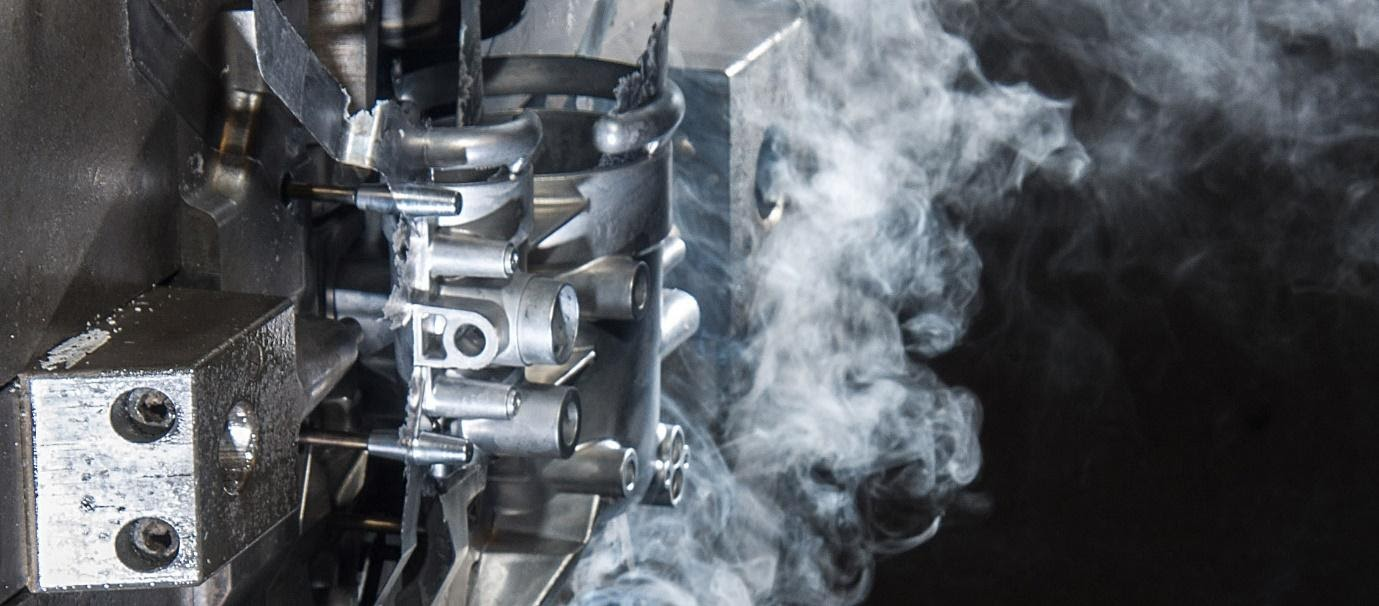Die casting is a high-efficiency, precision metal forming process widely used in industries such as automotive, electronics, and aerospace. By injecting molten metal under high pressure into a precision-designed mold, this method enables the production of complex, high-precision parts with excellent surface quality. This article explores the working principles, types, material selection, design considerations, and applications of die casting across various industries.
Die casting is a reusable mold-based metal forming process, ideal for mass production. The core steps involve mold preparation, molten metal injection, cooling, ejection, and finishing. Originating in the mid-19th century for printing type manufacturing, die casting quickly expanded into automotive, electronics, and aerospace industries. Today, it primarily utilizes aluminum, magnesium, and zinc alloys to manufacture products ranging from miniature components to critical automotive parts.
How Die Casting Works
- Mold Preparation: Molds can be single-cavity, multi-cavity, combination, or unit dies, designed to accommodate various complexities. Preheating and cleaning the mold help prevent thermal defects.
- Injection Process: Depending on whether hot chamber or cold chamber technology is used, molten metal is injected into the mold under high pressure.
- Cooling & Solidification: The metal cools and solidifies within the mold, forming the final part.
- Ejection: Once solidified, the mold opens, and the part is ejected.
- Finishing: Burrs and imperfections are removed to ensure the part meets design specifications.
Types of Die Casting
- Hot Chamber Die Casting: Used for low-melting-point metals (e.g., zinc, magnesium), where the melting and injection systems are integrated, offering fast cycle times and high efficiency.

- Cold Chamber Die Casting: Suitable for high-melting-point metals (e.g., aluminum, copper), where metal is melted externally before being injected, making it ideal for large, high-strength components.

Material Selection for Die Casting
Common materials include:
- Aluminum Alloys: Lightweight, corrosion-resistant, and strong—widely used in automotive engine housings, electronic heat sinks, and more.
- Magnesium Alloys: Lighter than aluminum with excellent castability, commonly found in aerospace and consumer electronics.
- Zinc Alloys: Low melting point and excellent fluidity, ideal for high-precision, thin-walled components like connectors and enclosures.
Key Design Considerations in Die Casting
- Draft Angle: Ensures smooth part ejection and reduces mold damage.
- Fillet Radii: Helps distribute stress evenly, enhancing part strength.
- Parting Line Placement: Proper positioning prevents functional and aesthetic defects.
- Wall Thickness Uniformity: Avoids shrinkage, porosity, and other casting defects.
- Ribs and Bosses: Strengthens parts while reducing material usage.
Applications of Die Casting Across Industries
- Aerospace: Used for engine components and structural parts, primarily in aluminum and magnesium alloys.
- Automotive: Produces engine blocks, transmission housings, and chassis components.
- Electronics: Essential for high-precision connectors, heat sinks, and casings.
- Consumer Goods: Found in kitchen appliances, power tools, and lighting fixtures.
- Building Hardware: Used for hinges, window frames, and locking mechanisms.
Advantages & Challenges of Die Casting
✅ Advantages
- High precision and complex shape capabilities, suitable for large-scale production.
- Excellent surface finish, reducing post-processing needs.
- High material utilization, minimizing waste and lowering costs.
⚠ Challenges
- High initial tooling costs, making it suitable for mass production.
- Potential defects like porosity and shrinkage, requiring advanced process control.
- Limited to non-ferrous metals, unsuitable for steel and iron casting.
Comparison of Die Casting with Other Manufacturing Methods
- Die Casting vs. Injection Molding: Die casting is for metal, while injection molding is for plastics. Die casting provides higher precision and strength for metal parts.
- Die Casting vs. Forging: Forging shapes metal under compressive forces, while die casting forms parts by injecting molten metal. Die casting is better for complex shapes, while forging excels in high-strength applications.
Choosing the Right Die Casting Supplier
Selecting an experienced die casting provider is critical. XY Global offers cutting-edge die casting solutions, ensuring high precision and superior quality. Certified under ISO 9001:2015, we provide rapid quotes and expert manufacturing guidance to optimize your production needs.
Conclusion
Die casting has become an indispensable manufacturing process due to its high precision, complexity handling, and mass production efficiency. Whether in aerospace, automotive, or electronics, die casting plays a vital role in modern industry. Partnering with an experienced supplier ensures efficiency and outstanding product quality.
Looking for a professional die casting solution? Contact us today! 🚀


Share:
Grand Opening! Kicking Off the New Year with Precision Manufacturing